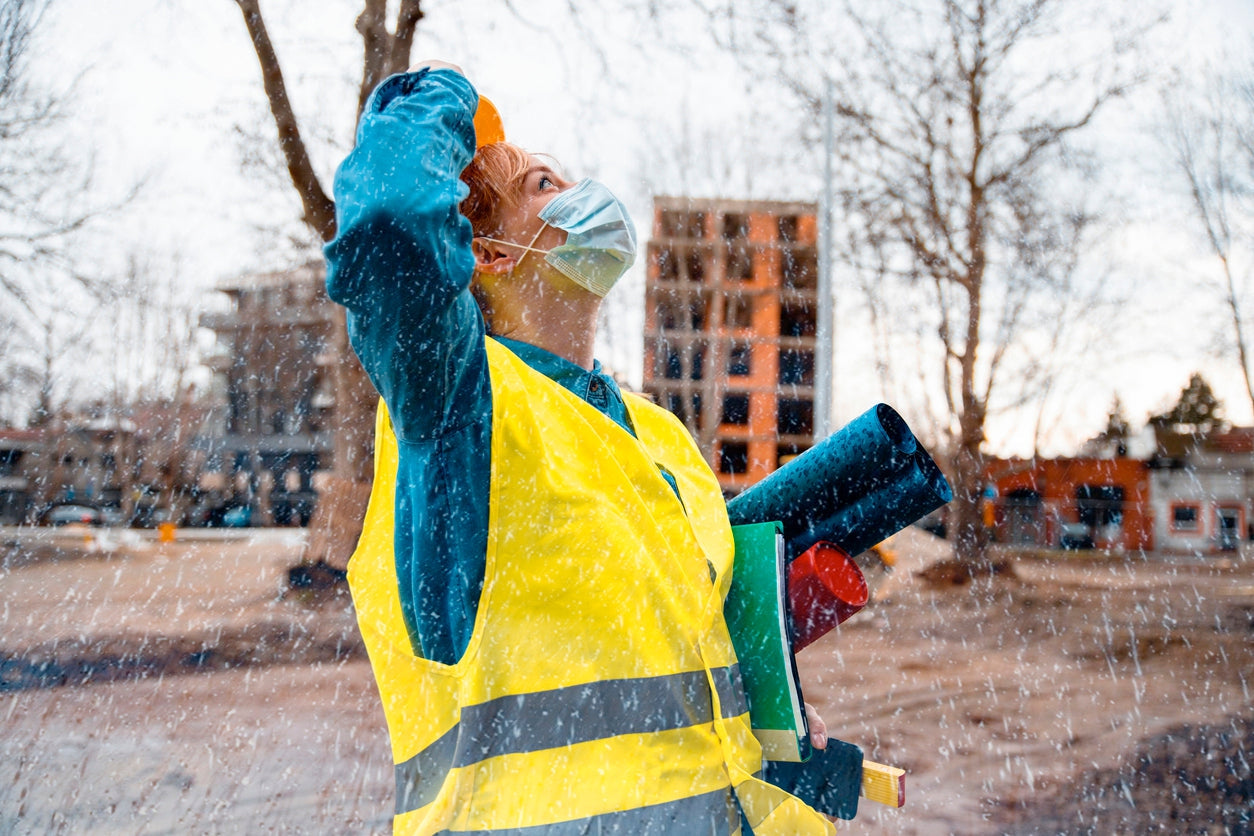In the realm of construction, where the sky can suddenly transform from clear blue to stormy gray, ensuring the safety of workers is paramount. Thunderstorm season ushers in a host of challenges that demand a proactive approach to safety. Let's delve into the specifics of construction safety gear that can effectively shield workers from the unpredictable forces of nature.
Understanding Thunderstorms
Before we delve into safety gear, let's grasp the dynamics of thunderstorms. These meteorological phenomena are born from the interaction of warm and cold air masses. The resulting instability leads to towering clouds and the atmospheric spectacle we know as thunderstorms. Central to these storms is lightning, a powerful discharge of electricity that poses significant risks to those caught outdoors.
Common Hazards in Construction
Thunderstorm season introduces a series of hazards that can disrupt construction operations. The risk of slips and falls due to wet surfaces is elevated. Moreover, the presence of heavy machinery and exposed electrical components increases the likelihood of electrocution incidents. These hazards not only jeopardize worker safety but can also lead to project delays.
Essential Safety Gear
The arsenal of safety gear available to construction workers during thunderstorm season is diverse and indispensable. Personal Protective Equipment (PPE) takes the forefront, encompassing waterproof clothing, non-slip footwear, and insulated gloves. Grounding equipment, such as rods and cables, provides a vital line of defense against lightning strikes. Emergency communication devices ensure seamless interaction even in the harshest conditions.
Selecting the Right PPE
Outfitting construction workers with the appropriate PPE can spell the difference between vulnerability and resilience. Waterproof clothing and footwear form the first layer of protection against rain and wet surfaces. Insulated gloves safeguard against electrical hazards, while protective headgear shields against falling debris and provides insulation from lightning strikes.
Importance of Grounding
Effective grounding is a cornerstone of thunderstorm safety. Grounding rods and cables dissipate the electrical charge of lightning, minimizing its impact. Equally important are safe equipment shutdown procedures that prevent electrical surges from harming workers and equipment.
Communication Preparedness
Uninterrupted communication is vital during thunderstorms. Two-way radios enable swift information exchange among workers, allowing them to coordinate their actions effectively. Mobile phone protectors shield devices from water and impact, ensuring that lines of communication remain open.
Creating a Thunderstorm Safety Plan
A robust safety plan is a roadmap to navigating thunderstorm season. Monitoring weather forecasts empowers construction teams to anticipate incoming storms and take timely precautions. Designating safe areas where workers can seek shelter provides a critical safety net when the skies turn ominous.
Training and Education
Empowering workers with knowledge is as important as providing them with gear. Conducting safety workshops familiarizes workers with thunderstorm-specific protocols. Regular drills simulate emergency scenarios, preparing workers to respond swiftly and confidently.
On-Site Lightning Safety
Being outdoors during a thunderstorm means being vulnerable to lightning strikes. Avoiding tall structures and staying away from metal objects significantly reduces the risk of being struck. By seeking low-lying ground and protective structures, workers can substantially minimize their exposure.
Emergency Protocols
Despite precautions, emergencies can still occur. Having readily accessible first aid and medical kits is crucial for treating injuries promptly. Equally vital are well-defined evacuation procedures that guide workers to safety in an organized manner.
Post-Storm Assessment
After the storm passes, it's time to assess the aftermath. Inspecting equipment and structures for damage is essential to prevent potential hazards. Addressing any issues promptly ensures that the construction site returns to a safe state.
Supporting Mental Well-being
While the physical aspects of safety are vital, mental well-being must not be overlooked. The stress and anxiety triggered by thunderstorms can impact workers' ability to perform effectively. Encouraging open communication and offering resources for managing stress are crucial steps in maintaining a resilient workforce.
The Role of Supervisors and Managers
Supervisors and managers play a pivotal role in shaping the safety culture of a construction site. Leading by example and consistently enforcing safety protocols set a standard that permeates the entire team. Their commitment to safety is the bedrock upon which a secure working environment is built.
As thunderstorm season tests the mettle of construction workers, the significance of safety gear becomes abundantly clear. From PPE that shields against the elements to grounding equipment that neutralizes lightning's threat, each piece of gear plays a vital role. Moreover, well-planned safety protocols, regular training, and a strong safety culture collectively fortify a construction site against the tempestuous challenges of thunderstorm season.

